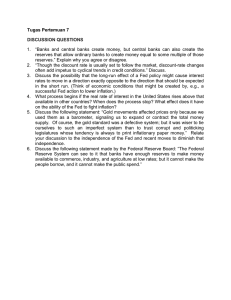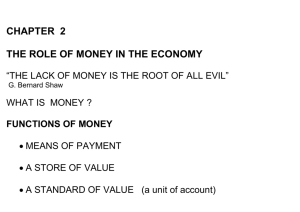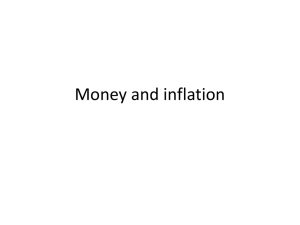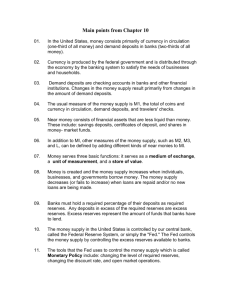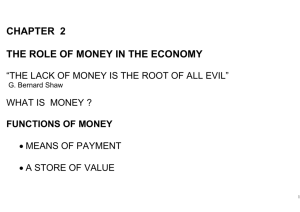money supply
advertisement
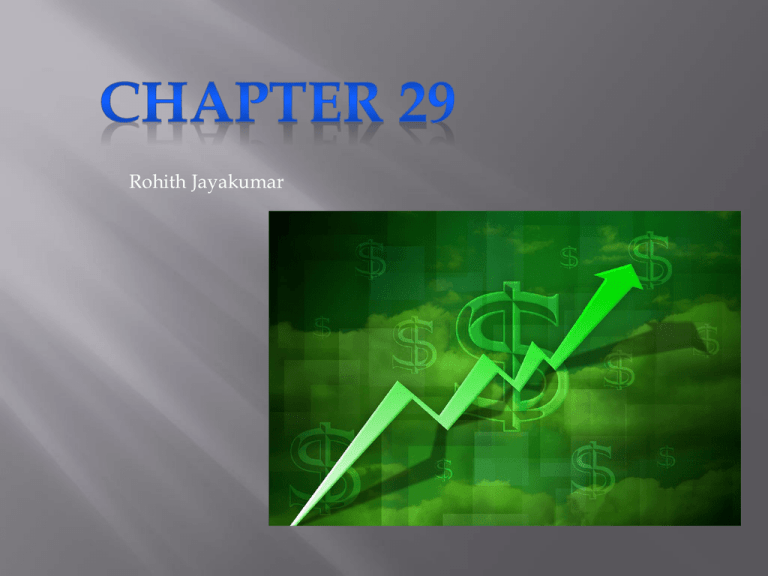
Rohith Jayakumar -The unemployment rate is the percentage of those who would like to work who do not have jobs. - The unemployment rate is not a measure of people who do not have jobs, it is a measure of people who are in the work force who do not have jobs. - The Federal Reserve is the Central Bank of the U.S. -In the U.S economy money takes the form of currency and various types of bank deposits such as checking accounts. - When banks loan out money, they increase the money supply. - Commodity money such as gold has intrinsic value. - The fed’s main method of controlling the money supply is through buying and selling government bonds. Selling bonds decreases the money supply, buying bonds increases the money supply. central bank an institution designed to oversee the banking system and regulate the quantity of money in the economy commodity money money that takes the form of a commodity with intrinsic value currency demand deposits discount rate federal funds rate Federal Reserve (Fed) fiat money the paper bills and coins in the hands of the public balances in bank accounts that depositors can access on demand by writing a check the interest rate on the loans that the Fed makes to banks the interest rate at which banks make overnight loans to one another the central bank of the United States money without intrinsic value that is used as money because of government decree fractionalreserve banking liquidity a banking system in which banks hold only a fraction of deposits as reserves the ease with which an asset can be converted into the economy’s medium of exchange medium of exchange an item that buyers give to sellers when they want to purchase goods and services monetary policy the setting of the money supply by policymakers in the central bank money money multiplier the set of assets in an economy that people regularly use to buy goods and services from other people the amount of money the banking system generates with each dollar of reserves money the quantity of money available in the economy supply open-market operations the purchase and sale of U.S. government bonds by the Fed reserve ratio the fraction of deposits that banks hold as reserves reserve requirements regulations on the minimum amount of reserves that banks must hold against deposits reserves deposits that banks have received but have not loaned out store of value an item that people can use to transfer purchasing power from the present to the future unit of account the yardstick people use to post prices and record debts -The overall level of prices in an economy adjusts to bring money supply and money demand into balance. - The principle of monetary neutrality states that changes in the quantity of money changes nominal variables but not real variables. - People do not necessarily lose money due to inflation because as inflation increases nominal incomes increases as well. classical dichotomy Fisher effect inflation tax menu costs the theoretical separation of nominal and real variables the one-for-one adjustment of the nominal interest rate to the inflation rate the revenue the government raises by creating money the costs of changing prices monetary neutrality the proposition that changes in the money supply do not affect real variables nominal variables variables measured in monetary units quantity equation the equation M × V = P × Y relates the quantity of money, the velocity of money, and the dollar value of the economy’s output of goods and services quantity theory of money a theory asserting that the quantity of money available determines the price level and that the growth rate in the quantity of money available determines the inflation rate real variables variables measured in physical units shoeleather costs the resources wasted when inflation encourages people to reduce their money holdings velocity of money the rate at which money changes hands

